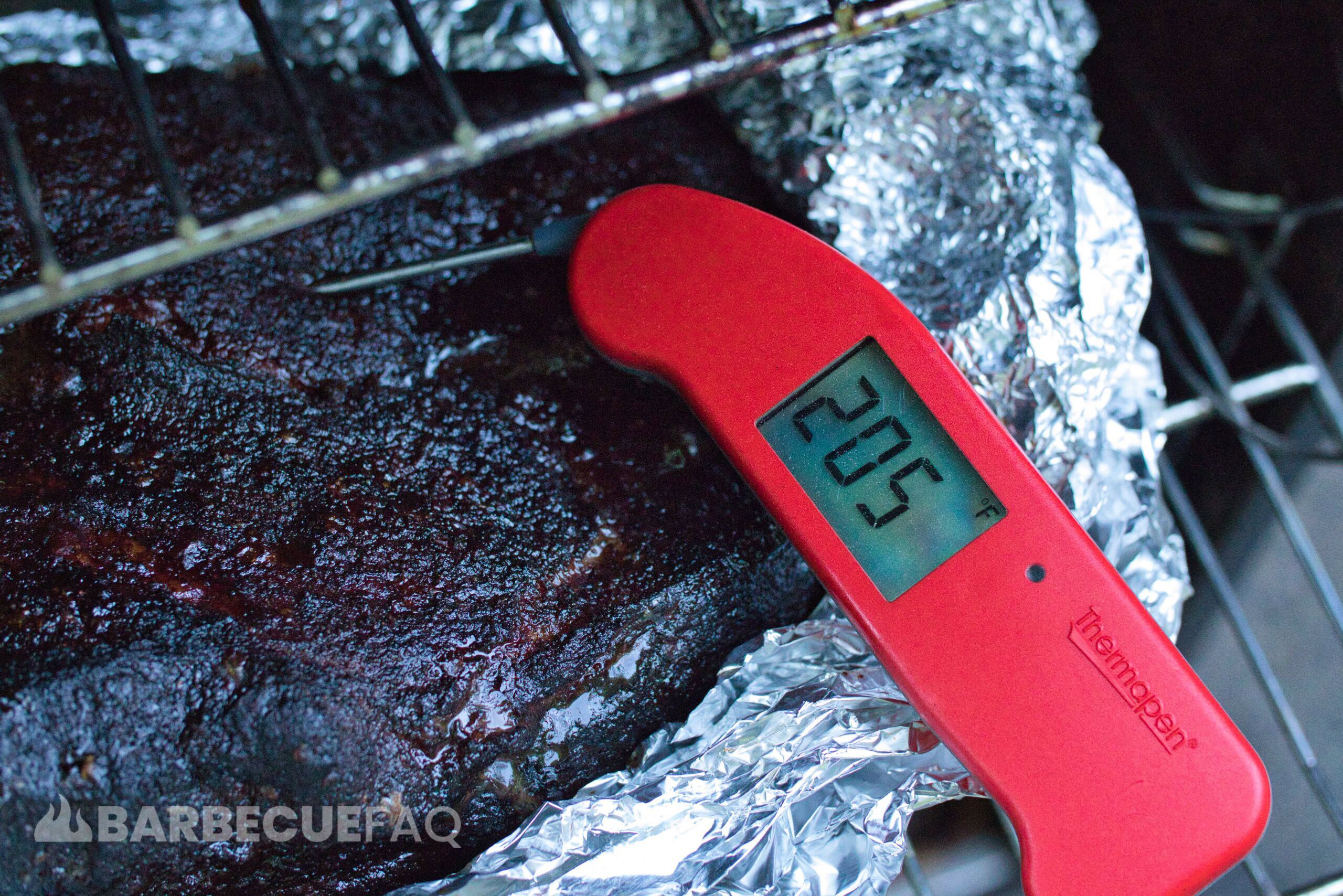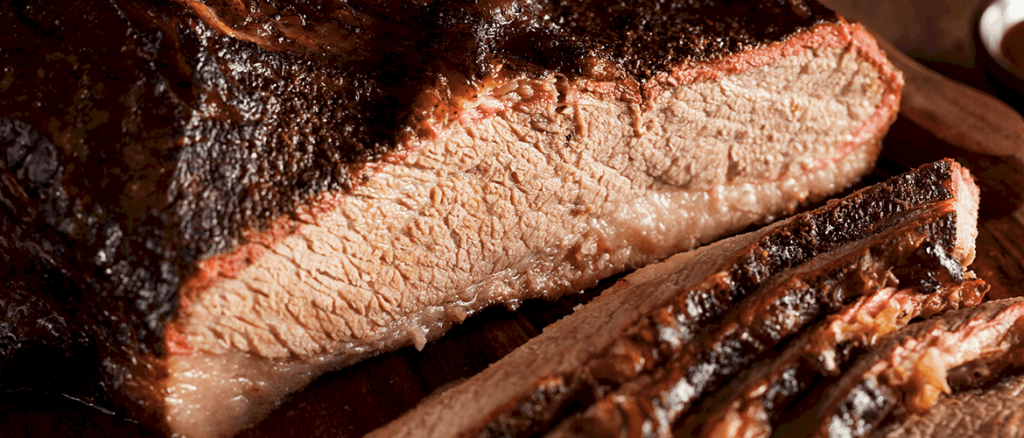An appropriate serving temperature for brisket is roughly 150 – 165F.
This temperature range would more appropriately be called a “slicing temperature.”
We’re Slicing At 150-165F Because it’s Safe to Eat
From a food safety standpoint you have the Food Danger Zone – which is between 40 – 140F.
Meaning, cooked food should be kept above 140F, especially if you’re not serving the meat right away.

This is a major reason you’ll find that barbecue restaurants will “hot hold” their cooked meats until the next day.
They’re both resting the meat so that it can gelatinize and they’re keeping the food safe to eat.
There’s also the other end of the spectrum where food is too hot to consume.
If you were to offer the brisket at 175F+, it’s likely too hot to eat and a person could burn themselves.
Serving Temperatures are NOT Finishing Temperatures
Brisket needs several hours under low and slow temperatures to render collagen into gelatin.
Between 160 – 205F, this process is only starting to happen.

It’s for this same reason you can’t simply sear a brisket to 195-205F. The meat may “finish” at a stereotypical “finishing temperature” but the meat is tough because the collagen hasn’t “denatured” or rendered.
Rather, a brisket is considered “finished” when the meat is probe tender.
A serving temperature is when the meat is made probe tender and has been allowed to rest down to an appropriate slicing temperature.
Brisket will take 1-2 hours to rest down to slicing temperatures of 150-165F.
Only Slice Brisket When it’s Time to Serve
As soon as you take a slice off a brisket, it will start to lose moisture and oxidize/turn grey.
Meaning, only slice when it’s time to heat.
If you need to keep the meat warm for a long period of time you need to:






2 comments
Patrick
Can i rest the brisket overnight after taking it out when done in an oven or cooler to serve at 1130 the next or so I need to put it in the frig?
It will be done at around 10 pm .
Dylan Clay
Hey Patrick!
So what you’re alluding to is called “holding.” I have a separate, nuanced article on this topic found here.
I’d urge you to read that article in it’s entirety.
Hope it helps!